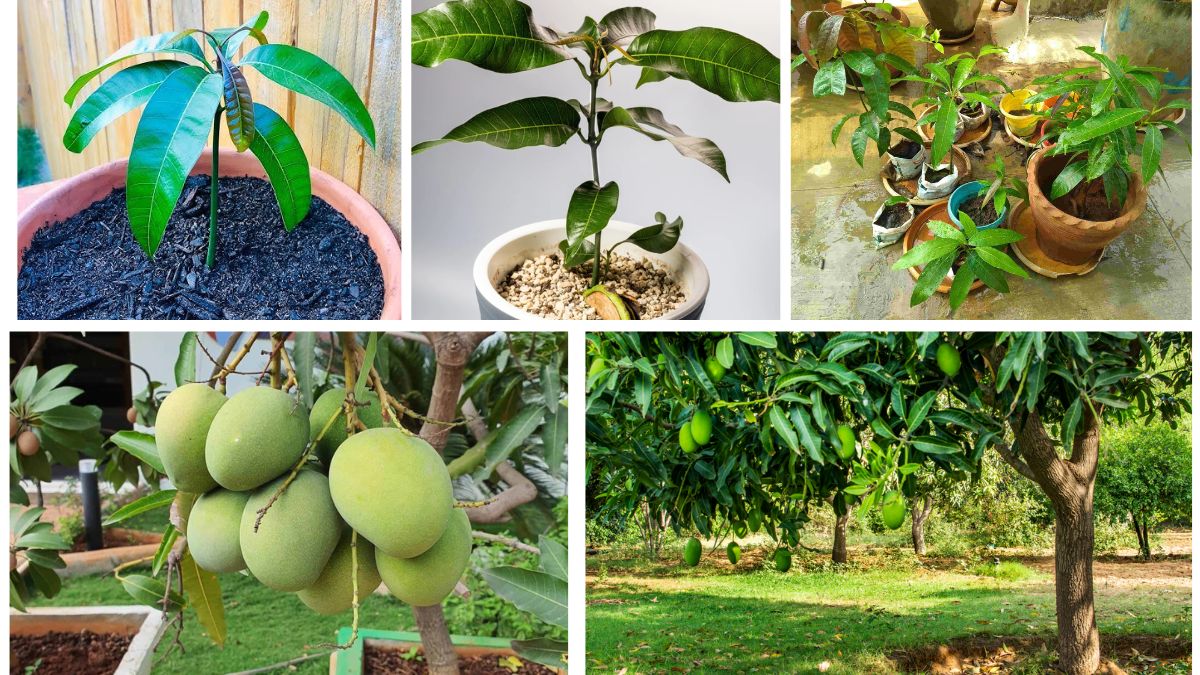Few trees capture the tropical spirit and bring as much joy as the mango tree (Mangifera indica). Known as the “King of Fruits,” mangoes are not only delicious but also deeply rooted in tradition, culture, and memories for many families around the world. Planting a mango tree in your own garden is more than just adding greenery—it’s about nurturing a living companion that grows with you, offering shade, fragrance, and juicy fruits for decades.
This guide will take you step by step, from planting a mango seed to watching your tree mature into a shady garden giant. Whether you live in a tropical climate or a warm subtropical zone, mango tree dreams can easily become a reality in your backyard.
Why Grow a Mango Tree at Home?
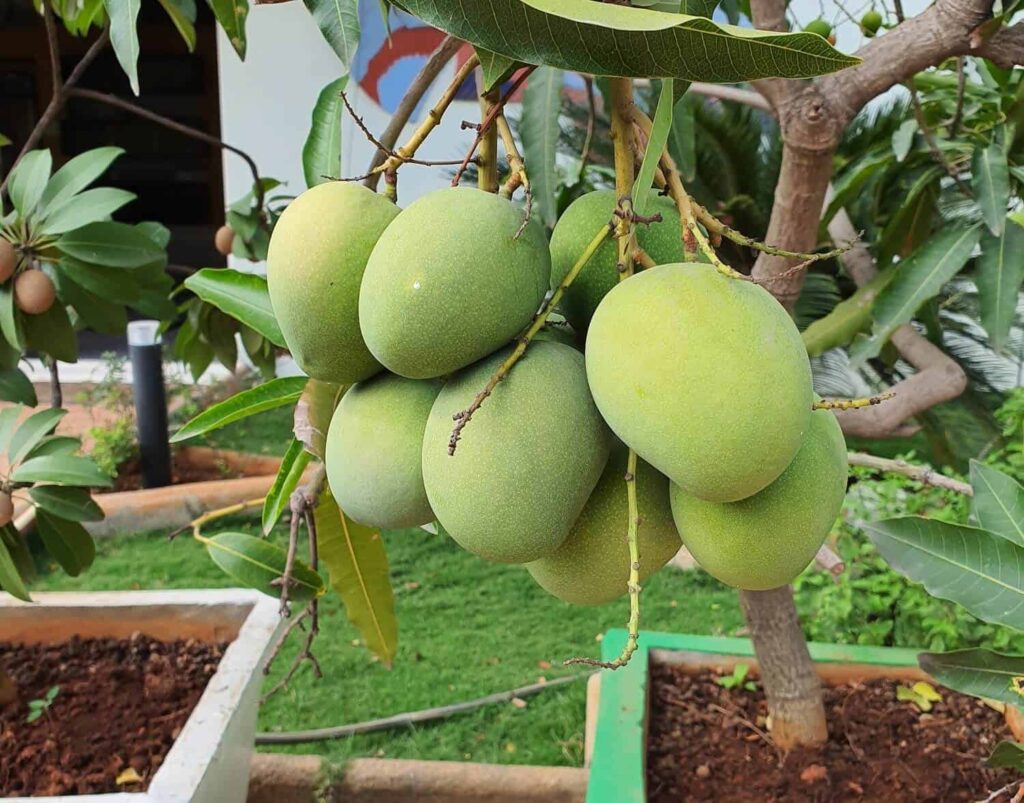
Before diving into the process, it’s important to appreciate why mango trees are so beloved in gardens:
- Delicious Harvests: Nothing compares to biting into a sun-warmed mango plucked straight from your own tree.
- Longevity: Mango trees can live for over 100 years, becoming part of family traditions for generations.
- Shade and Beauty: With their large, glossy leaves and wide canopy, they provide a natural green umbrella for your garden.
- Low Maintenance: Once established, mango trees are hardy and relatively drought-tolerant.
- Environmental Value: They support biodiversity by providing habitat and food for birds, bees, and other pollinators.
Step 1: Choosing the Right Mango Variety
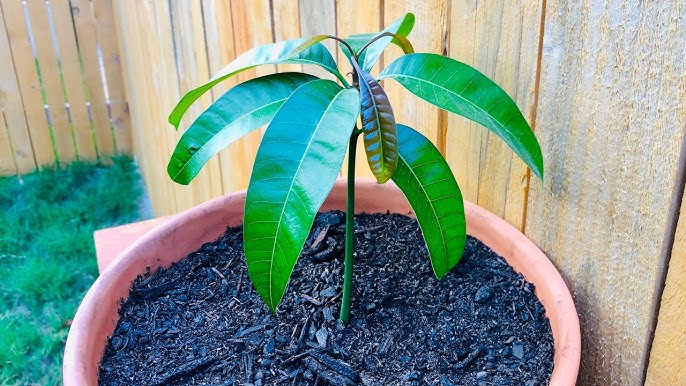
Mangoes come in hundreds of varieties, each with its own flavor, texture, and growth habit. Choosing the right type for your garden will set you up for success.
- Alphonso (India) – Known for its rich sweetness and saffron-colored flesh.
- Haden (Florida) – Early-season variety with vibrant red-green skin.
- Kent (Florida/Latin America) – Late-season, less fibrous, and very juicy.
- Nam Dok Mai (Thailand) – Slim, aromatic, and perfect for smaller spaces.
- Dwarf Varieties (like Carrie or Pickering) – Ideal for container gardening or smaller gardens.
Tip: If you’re short on space, choose a grafted dwarf variety that grows no more than 8–10 feet tall.
Step 2: Starting Your Mango Tree from Seed
Planting a mango from seed is both fun and rewarding, though it requires patience since seed-grown trees may take longer to bear fruit.
- Prepare the Seed
- After eating a ripe mango, carefully clean the husk.
- Crack it open to reveal the inner seed (similar to a large bean).
- Let it dry for a day to reduce rot risk.
- Planting the Seed
- Choose a pot with good drainage or plant directly into the ground if your climate allows.
- Plant the seed flat or on its side about 1 inch deep.
- Keep the soil moist but not waterlogged.
- Germination
- Within 1–3 weeks, the seed will sprout.
- Mango seedlings grow quickly, often reaching a foot tall in the first couple of months.
Note: For faster fruit production, many gardeners prefer grafted mango trees available from nurseries, which can start bearing fruit within 3–5 years.
Step 3: Ideal Growing Conditions
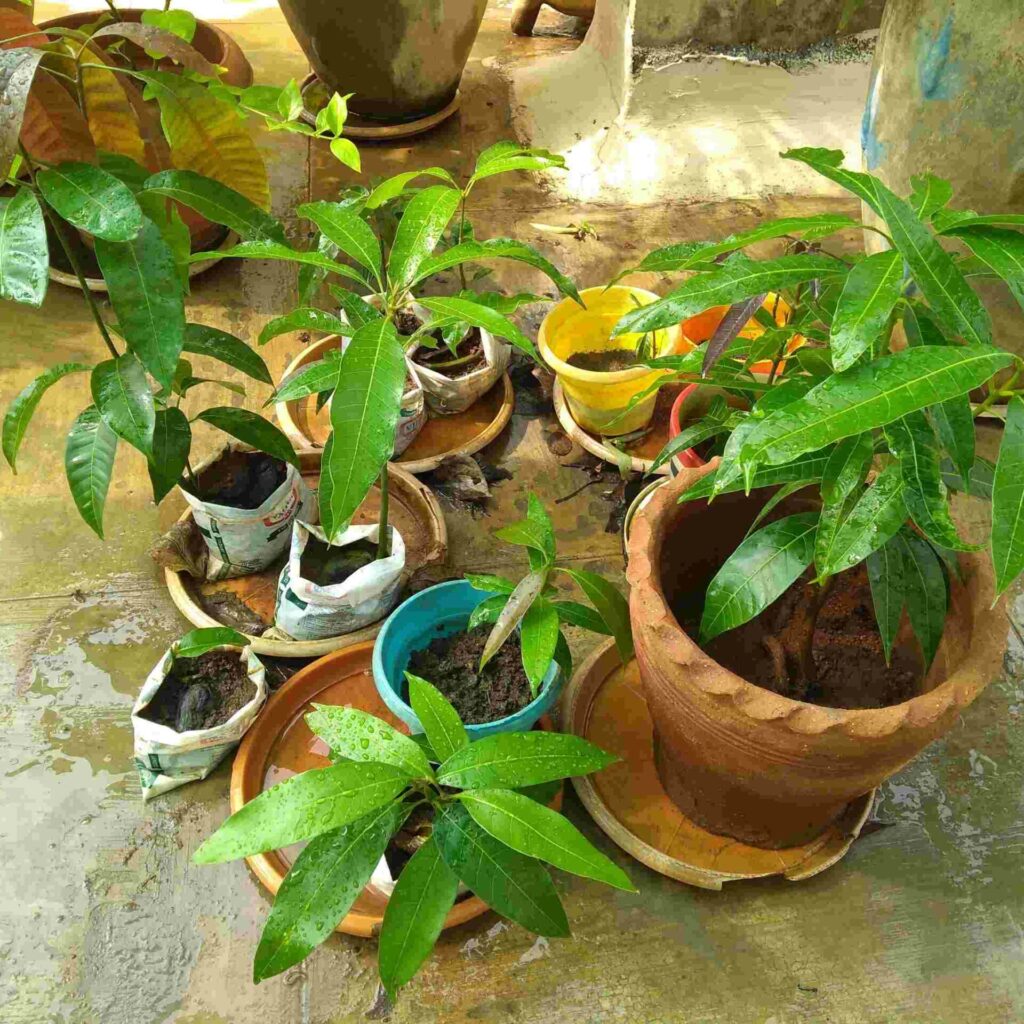
Mango trees thrive best in specific conditions:
- Climate: Tropical and subtropical regions with warm temperatures (above 40°F / 5°C).
- Sunlight: At least 6–8 hours of direct sunlight daily.
- Soil: Well-draining sandy or loamy soil. Avoid heavy clay that traps water.
- Watering:
- Young trees: Water 2–3 times weekly.
- Mature trees: Deep watering every 1–2 weeks is enough, depending on rainfall.
- Fertilizing: Use a balanced fertilizer (10-10-10) during the first two years, then switch to high-potassium mixes to promote flowering and fruiting.
Step 4: Caring for Your Mango Tree
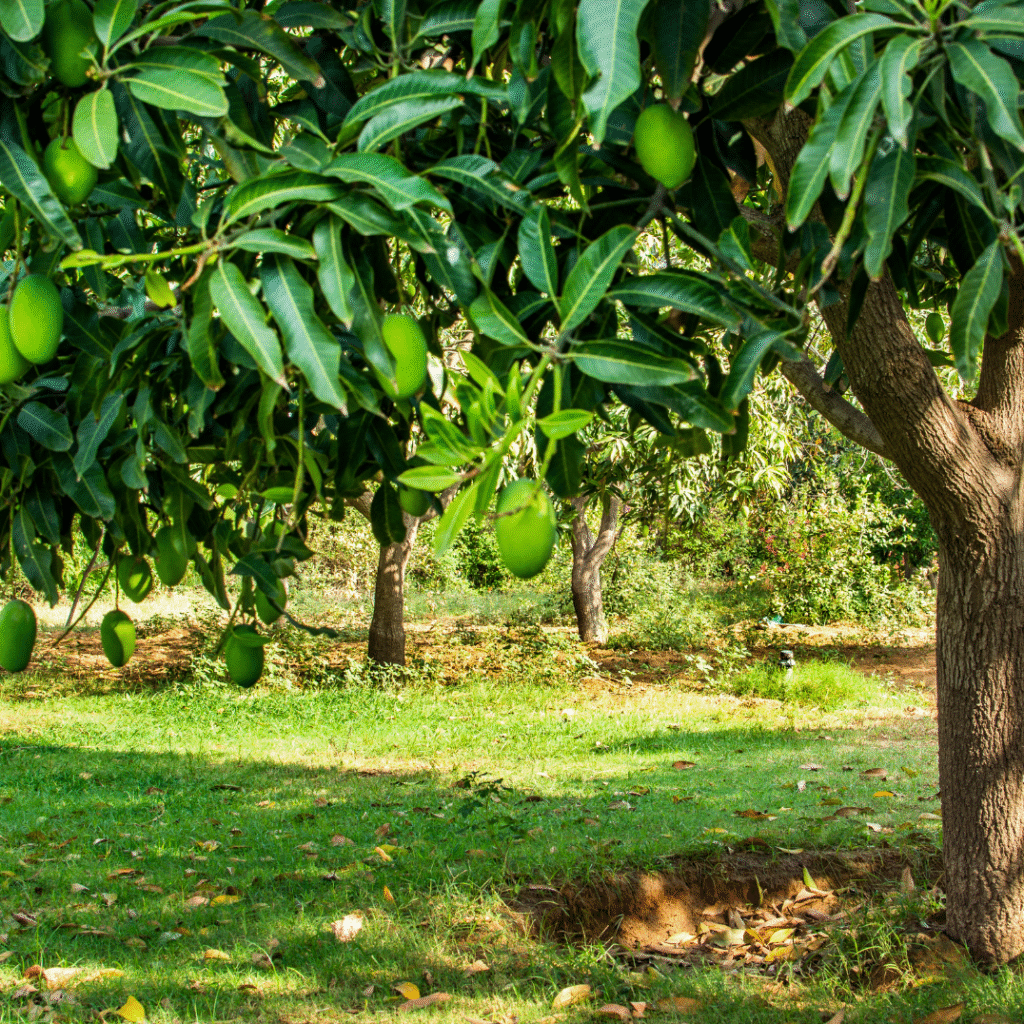
Pruning
- Prune in the early years to shape the canopy and encourage strong branches.
- Remove dead or crossing branches to improve airflow and reduce pests.
Mulching
- Add organic mulch (leaves, straw, or compost) around the base to conserve moisture and suppress weeds.
- Keep mulch 6–8 inches away from the trunk to prevent rot.
Pest and Disease Management
- Common pests: Mealybugs, aphids, and fruit flies.
- Diseases: Powdery mildew and anthracnose can affect flowers and fruit.
- Use neem oil or organic fungicides to keep issues in check.
Step 5: From Blossoms to Fruit
One of the most magical stages of mango tree growth is flowering. Mango trees typically bloom in late winter to early spring, with small, fragrant, star-shaped flowers.
- Pollination: Bees and insects play a big role, so avoid heavy pesticide use during flowering.
- Fruit Development: It takes 3–6 months for mangoes to ripen after flowering.
- Harvesting: Pick mangoes when their color deepens, the fruit plumps up, and a fruity aroma develops near the stem.
Step 6: Enjoying the Shade and Harvest
By year 4–7 (for grafted trees) or 7–10 (for seed-grown trees), your mango tree will reward you with its first harvest. Over the years, the tree grows into a majestic canopy, offering both shade for relaxing afternoons and baskets full of fruit.
Imagine sitting under your mango tree with a book, sipping a chilled mango smoothie, or watching children play in its shade. This is when your mango tree dreams truly come alive.
Bonus Tips for Mango Tree Success
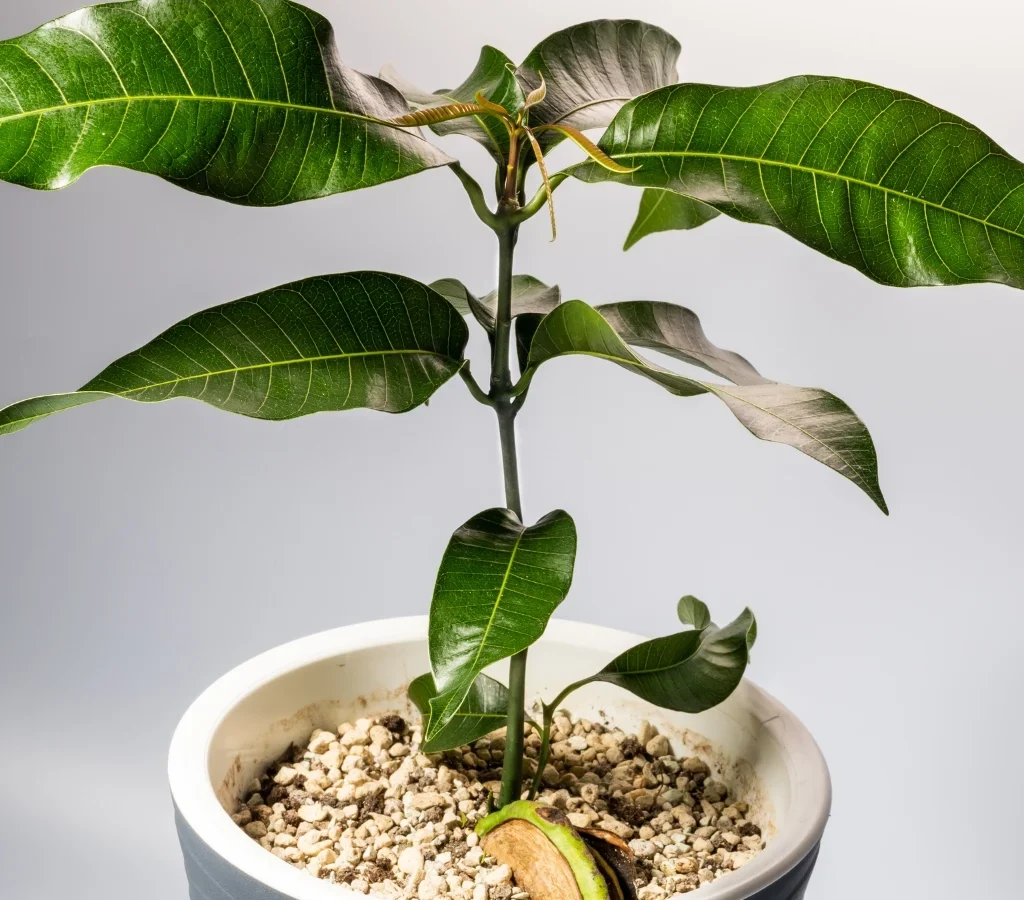
- Patience is Key: Mangoes are worth the wait. Don’t be discouraged if your tree takes years before bearing fruit.
- Container Growing: If space is limited, grow a dwarf mango in a large pot with proper pruning.
- Seasonal Care: In colder regions, bring young container-grown mangoes indoors during frosty nights.
- Companion Planting: Grow marigolds nearby to deter pests naturally.
Final Thoughts
Planting a mango tree is more than just gardening—it’s an act of legacy. From a small seed sprouting in a pot to a towering tree shading your home, the journey is a lesson in patience, care, and reward. Every bloom, every leaf, and every mango tells the story of growth and abundance.
If you dream of a garden filled with shade, beauty, and delicious harvests, let the mango tree be your green companion. In just a few years, you’ll find yourself not only enjoying sweet fruits but also building memories under its leafy canopy for generations to come.
